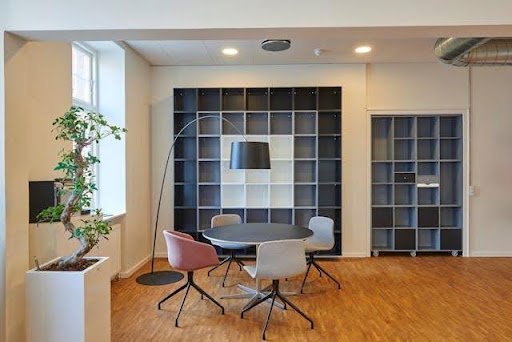How to Design a Perfect Commercial Office Space

Whether you’re starting a new business or looking to revamp your existing office space, designing the perfect commercial office can have a significant impact on productivity, employee morale, and overall success. From layout and aesthetics to functionality and comfort, every aspect of your office design plays a crucial role in creating a conducive work environment.
Here are some practical tips to help you design a perfect commercial office space that meets your needs and reflects your company’s identity.
Assess Your Needs and Goals
Before diving into the design process, take the time to assess your specific needs and goals for the office space. Consider factors such as the size of your team, the nature of your work, and any specialized requirements.
Are you looking to foster collaboration and creativity, or do you need a more formal and structured environment? Understanding your needs and goals will guide your design decisions and ensure that the final space aligns with your vision.
Prioritize Functionality and Flow
Efficient workflow and seamless navigation are essential for maximizing productivity in a commercial office space. Pay attention to the layout and flow of the space, ensuring that it promotes easy movement and minimizes distractions.
Consider factors such as the location of workstations, meeting areas, and communal spaces, as well as access to essential amenities like restrooms, kitchen facilities, and storage areas. Aim for a layout that encourages collaboration, communication, and efficiency among your team members.
Create Flexible Workspaces
In today’s dynamic work environment, flexibility is key. Design your office space to accommodate different work styles and preferences, allowing employees to choose the environment that best suits their needs. Get customer made 3D print crafts for postal employees.
Incorporate a mix of open-plan areas for collaboration, private offices or quiet zones for focused work, and versatile meeting spaces that can be easily reconfigured as needed. Providing flexibility in workspace design promotes employee satisfaction, engagement, and creativity.
Prioritize Comfort and Ergonomics
Comfortable and ergonomic furnishings are essential for promoting employee well-being and productivity. Invest in high-quality office chairs, desks, and ergonomic accessories that provide proper support and encourage good posture.
Consider factors such as adjustable seating, standing desks, and adequate lighting to create a comfortable and healthy work environment. Get laminate office desks to keep your office space neat and organized.
Incorporate Brand Identity and Culture
Your office space should reflect your company’s brand identity, culture, and values. Use design elements such as color schemes, branding materials, and signage to convey your company’s personality and create a cohesive and memorable environment.
Incorporate elements of your brand story, mission statement, and company values into the office design to reinforce your culture and foster a sense of belonging among employees and visitors alike.
Focus on Aesthetics and Ambiance
Aesthetics play a crucial role in shaping the overall ambiance and atmosphere of your office space. Choose design elements such as furniture, artwork, lighting, and decor that reflect your company’s style and personality. Aim for a balance between functionality and aesthetics, creating a visually appealing environment that inspires creativity, innovation, and collaboration.
Pay attention to details such as color palettes, textures, and finishes to create a cohesive and inviting space that leaves a lasting impression on clients, employees, and visitors.





